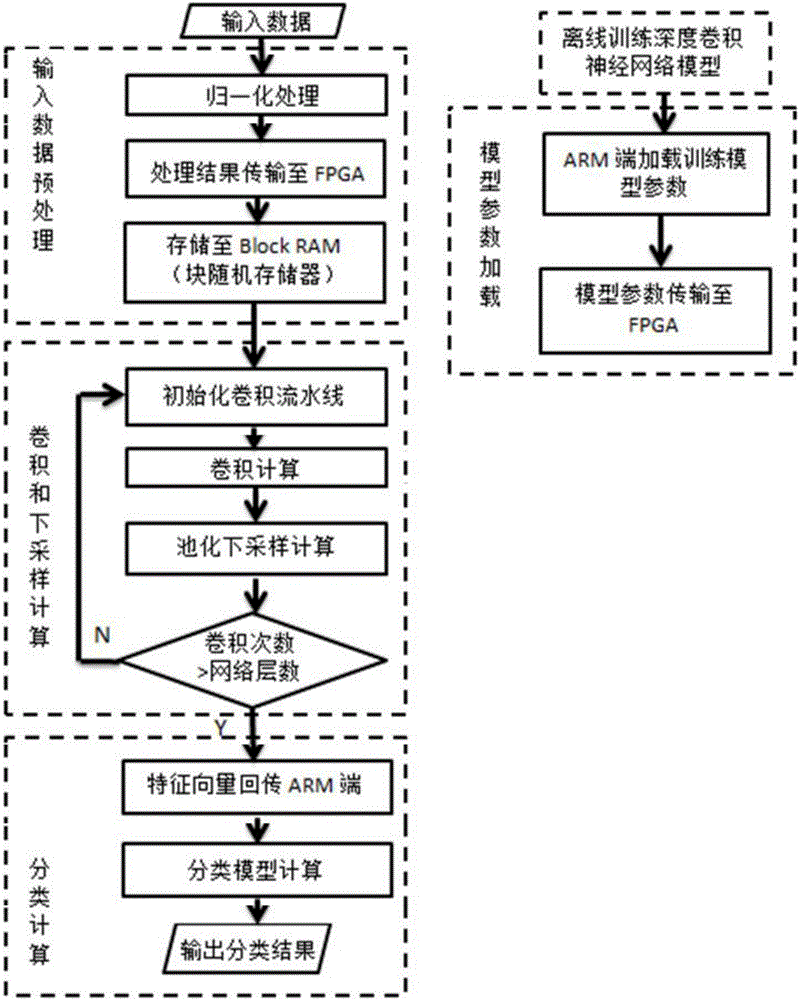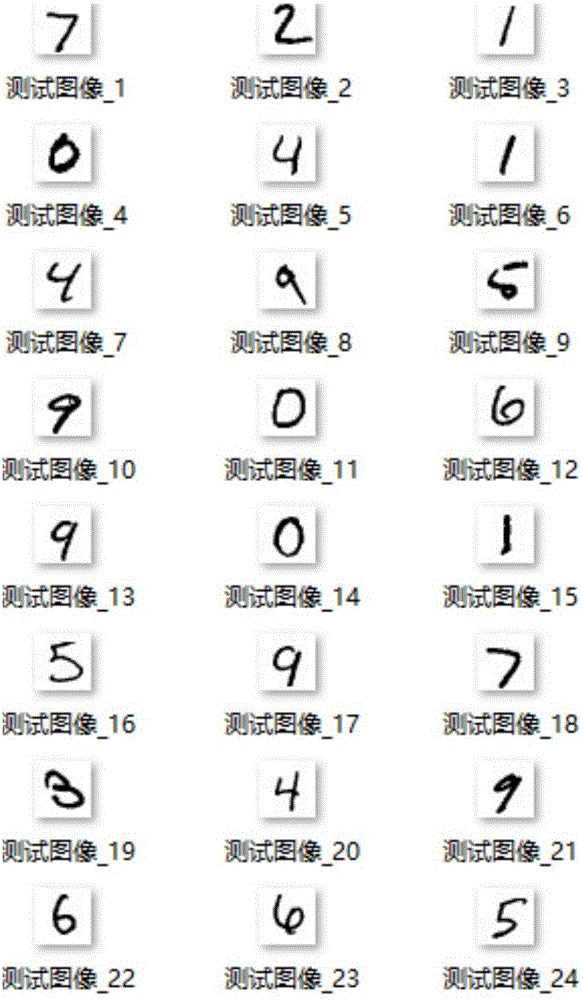FPGA-based deep convolution neural network realizing method
A technology of deep convolution and implementation method, applied in biological neural network model, physical implementation, speech analysis, etc., can solve the problems of low efficiency and high power consumption, achieve high efficiency, low power consumption, and improve algorithm efficiency
- Summary
- Abstract
- Description
- Claims
- Application Information
AI Technical Summary
Problems solved by technology
Method used
Image
Examples
Embodiment Construction
[0073] The method of the present invention is explained below in conjunction with the accompanying drawings, and the specific implementation of the handwritten character recognition algorithm is realized on the FPGA hardware platform using a deep convolutional neural network model. (The deep convolutional neural network model consists of the input layer I, the first convolutional layer C1, the first downsampling layer S1, the second convolutional layer C2, the second downsampling layer S2 and the full connection layer Softmax The input image size is 28×28, the first convolutional layer contains a convolution kernel with a size of 5×5, and the second convolutional layer contains three convolution kernels with a size of 5×5).
[0074] The specific operation steps of the handwritten character recognition algorithm implemented on the FPGA using the deep convolutional neural network model are as follows: figure 1 shown.
[0075] 1. Load the trained model parameters
[0076] First...
PUM
 Login to View More
Login to View More Abstract
Description
Claims
Application Information
 Login to View More
Login to View More - R&D
- Intellectual Property
- Life Sciences
- Materials
- Tech Scout
- Unparalleled Data Quality
- Higher Quality Content
- 60% Fewer Hallucinations
Browse by: Latest US Patents, China's latest patents, Technical Efficacy Thesaurus, Application Domain, Technology Topic, Popular Technical Reports.
© 2025 PatSnap. All rights reserved.Legal|Privacy policy|Modern Slavery Act Transparency Statement|Sitemap|About US| Contact US: help@patsnap.com



